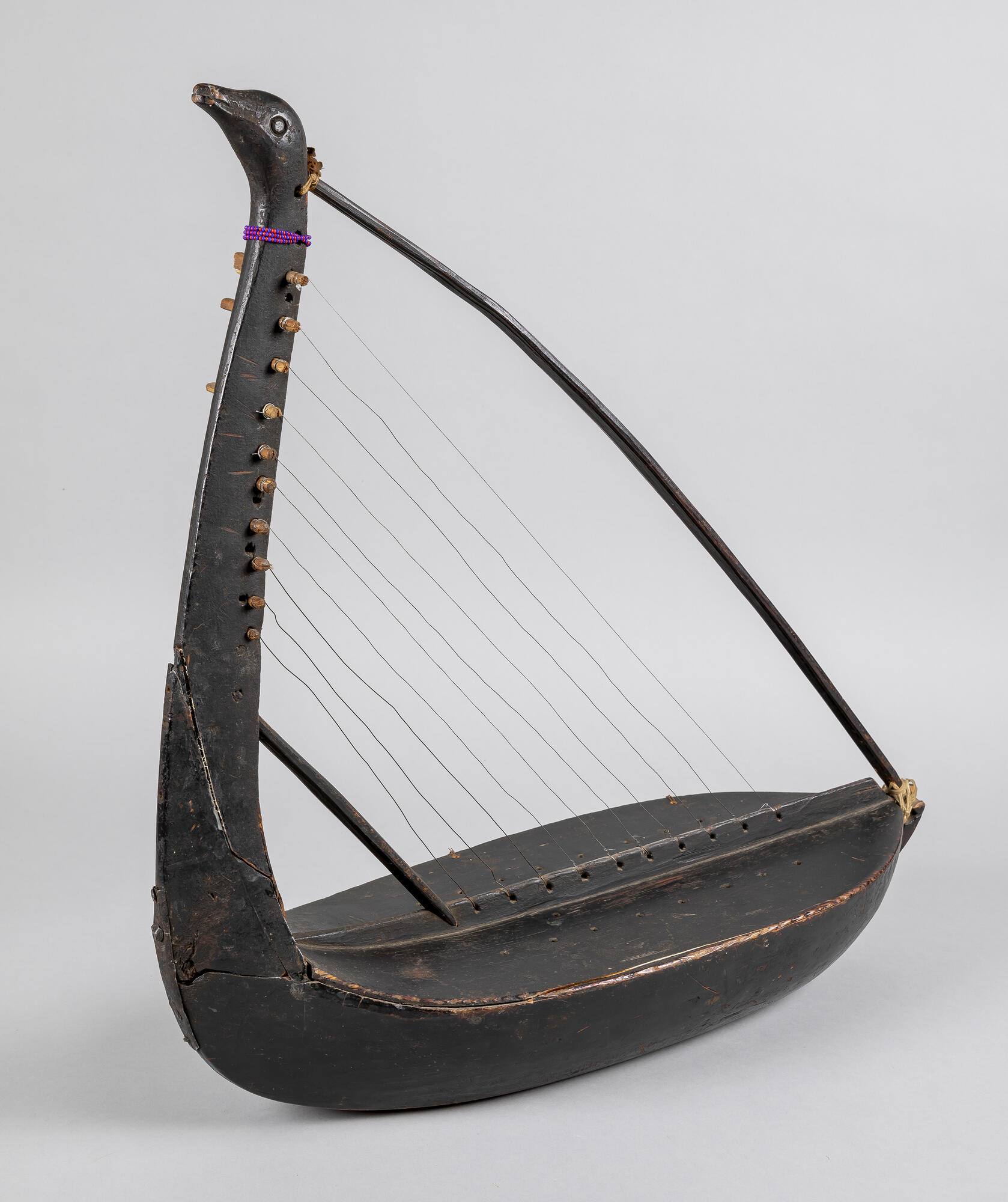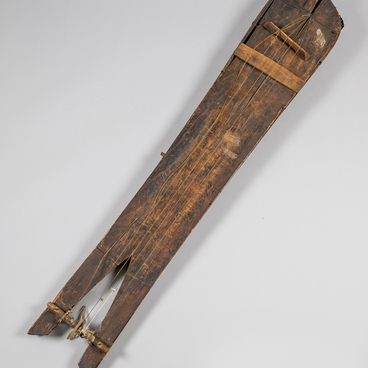The musical instrument on display in the Ugut Museum of Local History is a very simple variation of the harp. Based on convincing evidence, the origins of the harp go way back to the hunting bow. It is believed that the sound of the vibrating bowstring when an arrow is fired, inspired people to create the first ever plucked instrument.
The swan is a traditional musical instrument of the Khanty people. The Khanty name of this musical instrument literally means “crane” (tor), “crane tree” (torop-yukh), etc. “Swan” and “goose” are what the instrument is referred to in Russian.
The swan is a plucked string instrument similar to the harp, which was a very popular instrument in the countries of the Old World. The swan consists of a resonant boat-shaped case, and a high curved neck. Both parts are carved from a single piece of cedar or spruce. At the top of the hollow case is a soundboard with sound holes, and in the middle there is a special thin rail with holes for attaching the lower ends of brass strings. The upper ends of the strings are fixed with pegs to the top of the neck, which is crowned with a carved bird’s head.
In her book “Khanty and Mansi: a Look from the 21st Century”, Zoya Petrovna Sokolova states:






